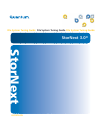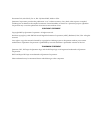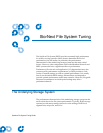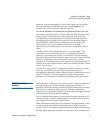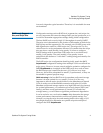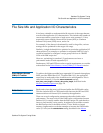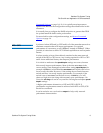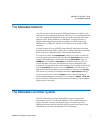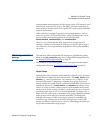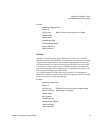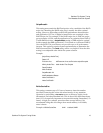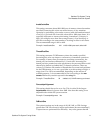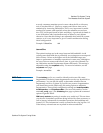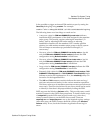
StorNext File System Tuning
The Underlying Storage System
StorNext File System Tuning Guide 3
metadata operations throughput. This is easily observed in the hourly
File System Manager (FSM) statistics reports in the
cvlog file. For
example, here is a message line from the cvlog file:
PIO HiPriWr SUMMARY SnmsMetaDisk0 sysavg/350 sysmin/333 sysmax/367
This statistics message reports average, minimum, and maximum write
latency (in microseconds) for the reporting period. If the observed
average latency exceeds 500 microseconds, peak metadata operation
throughput will be degraded. For example, create operations may be
around 2000 per second when metadata disk latency is below 500
microseconds. However, if metadata disk latency is around 5
milliseconds, create operations per second may be degraded to 200 or
worse.
Another typical write caching approach is a “write-through.” This
approach involves synchronous writes to the physical disk before
returning a successful reply for the I/O operation. The write-through
approach exhibits much worse latency than write-back caching; therefore,
small I/O performance (such as metadata operations) is severely
impacted. It is important to determine which write caching approach is
employed, because the performance observed will differ greatly for small
write I/O operations.
In some cases, large write I/O operations can also benefit from caching.
However, some SNFS customers observe maximum large I/O
throughput by disabling caching. While this may be beneficial for special
large I/O scenarios, it severely degrades small I/O performance;
therefore, it is suboptimal for general-purpose file system performance.
RAID Read-Ahead
Caching 0
RAID read-ahead caching is a very effective way to improve sequential
read performance for both small (buffered) and large (DMA) I/O
operations. When this setting is utilized, the RAID controller pre-fetches
disk blocks for sequential read operations. Therefore, subsequent
application read operations benefit from cache speed throughput, which
is faster than the physical disk throughput.
This is particularly important for concurrent file streams and mixed I/O
streams, because read-ahead significantly reduces disk head movement
that otherwise severely impacts performance.
While read-ahead caching improves sequential read performance, it does
not help random performance. Furthermore, some SNFS customers
actually observe maximum large sequential read throughput by disabling
caching. While disabling read-ahead is beneficial in these unusual cases,



